[ad_1]
By Sean Tinney July 24, 2023
Still seems like yesterday, but it’s actually been a few years since a pandemic swept the world and brought just about every small business to a halt.
If the lessons of the Coronavirus Pandemic taught us anything, it’s that in today’s world disasters — or even pandemics — can happen when we least expect it.
As business owners, you need to be prepared. The ways in which you communicate with your customers has to be adjusted when these life altering situations occur.
And the best way to communicate with your audience during these disasters or pandemics is with email.
Whether it’s a hurricane, earthquake, wildfire, or pandemic, email is an important tool to use. Especially if you don’t want to alienate your customers.
So let’s get into how you should be using email during a disaster or pandemic to communicate with your audience.
Who should your email come from?
People are more likely to open your email if they trust and recognize the sender name. In fact, studies have shown that trust in the sender name could lead to higher open rates.
Make sure you choose a “friendly from” name that your customers recognize and trust. If you’re the person who manages your company’s email marketing, adding your name could add a personal touch and help recipients feel connected to you.
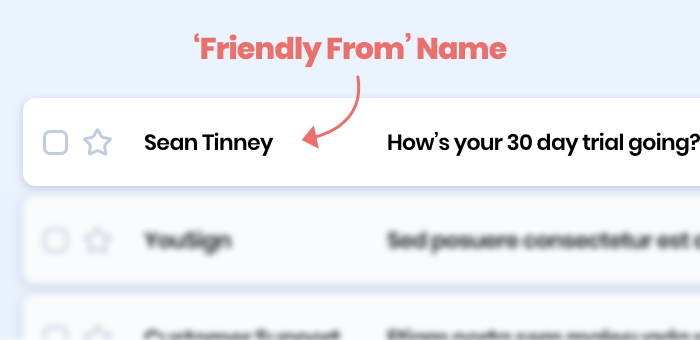
You may have used “Customer Service,” your brand name, or some other name as your “friendly from” in the past. However, during a natural disaster or pandemic, you may want to consider changing it for the time being. At the very least perform an A/B split test to see which friendly “from” generates a higher open rate.
Your “from” address and reply-to address can still be customerservice@ or help@, but update the friendly “from” to a trusted name.
What type of email communication is appropriate?
During these difficult times your customers may be struggling emotionally or financially. So be sensitive with what you email during a disaster. Don’t make light of the situation, as you will see with some of the email examples below.
Be super clear with your communications, this is not the time to be cute with your subject line or content. Use language that is sympathetic. This could actually be an opportunity to strengthen your relationship by establishing a stronger rapport with your customers.
We know you’re in business to promote your services and make money. But when a natural disaster or pandemic first strikes, this may not be the best time, unless your business provides an answer to one of their immediate pain points.
For example, during the COVID-19 pandemic it was appropriate for a grocery store to promote their sales, but they should be sensitive to how they communicate this email message.
As a grocery store owner, your main message shouldn’t be “SALE, SALE, SALE.” Take the considerate approach, instead. Try something like, “Having difficulty getting your groceries? We’d be happy to help with delivery services.”
Ultimately, how you communicate is just as important as what you have to sell.
Even during a crisis, you want to keep your brand top of mind as long as it’s done in a way that’s sensitive and demonstrates awareness of people’s struggles. After all, you may be offering a solution to a problem.
Here are a few types of marketing emails that are appropriate to send during these times.
Highlight relief efforts
Is your company providing any type of relief effort? Are you accepting donations to help individuals affected by these events? If so, highlight them in an email.
Here’s a great example from Staples. This email is not talking about their products but instead it communicates that they will be donating to help schools impacted by Hurricane Harvey. And they have a Donate Now CTA, so their customers can also help support this cause.
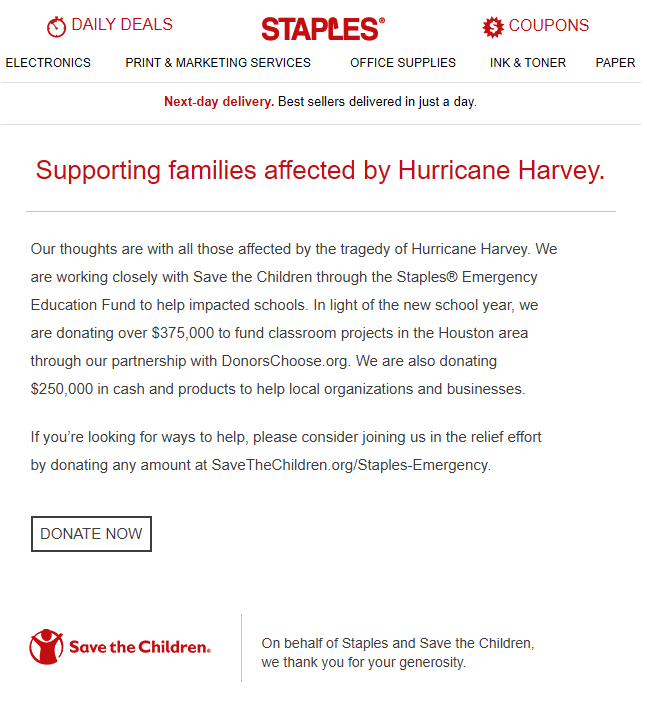
The CTA is also key in this email. It’s a white CTA on a white background which is typically not how you want to draw attention to it. But in this case Staples doesn’t want to be too aggressive in asking for a donation.
Spread some good news
Do you have something positive to share? It doesn’t necessarily have to be something related to your company. Trying times bring out the best in people. If you see any of this good will happening in your community, share it. Your customers will appreciate it.
Provide value-added information
Asking for a sale when a natural disaster or pandemic first hits may not be the best use of your email. People are distracted, worried, and unless you have a product or service that can help your customers in the current situation, they may not give your email any thought.
That does not mean you shouldn’t send an email. Quite the opposite, I encourage you to send an email. Get people to interact with your brand. But have your email provide value-added information given the situation.
For example, when states first shut down due to the coronavirus, you could have sent an email letting your customers know which banks were allowing people to defer mortgage payments or car payments. You may not be in the financial industry, but at that time, that information may have provided immense value to the reader.
How frequently should you email during a disaster?
This really depends on several factors. If your product or service can help your customers, then you have an opportunity to increase your email sends. Even if your business doesn’t answer a specific need, if you are sending emails which are getting engagement then feel free to maintain that volume.
How often you email during a disaster is really dependent on your unique audience and what you told them you would send upfront. If you told your subscribers you would send daily emails, stick to that cadence. However, if you do plan to increase your email sends given the situation, make sure you tell them and give them a way to mute certain emails.
Update your automated campaigns
If you have automated campaigns set up, double check that they still make sense and are appropriate considering the climate.
Put yourself in your customers’ shoes and ask yourself if any of the information within the email can be viewed as insensitive or not relevant in the current environment.
You’d be surprised how many businesses forget to look at these emails and end up having to send an apology email later.
Track your KPI’s
You should also be keeping an eye on your key performance indicators (KPI), but this is even more important during a pandemic or natural disaster. Ultimately your KPIs will give you a good indication of how your emails are being perceived.
If your open rate is low, then the subject line is not convincing customers that your email is worth opening.
The biggest indicator will be your opt-out rate. If you see a spike, then it’s evident that your message is clearly not resonating with your customers. And you better rethink your email marketing strategy.
Email communication examples: The right and wrong to email during a disaster
These emails used a frivolous tone that was surely meant in good fun, but stressed recipients found their flippancy too callous to graciously accept.
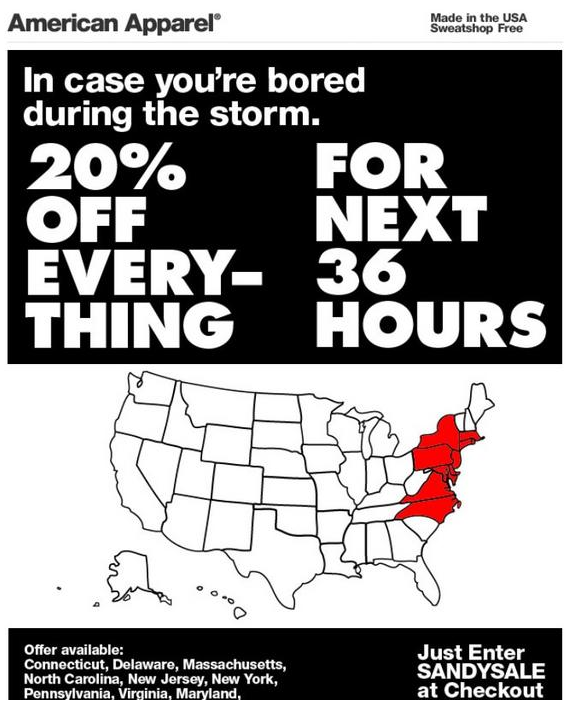
Other businesses took a different approach, acknowledging the hassle – and sometimes danger – that a recent storm incurred, and genuinely attempting to extend help.
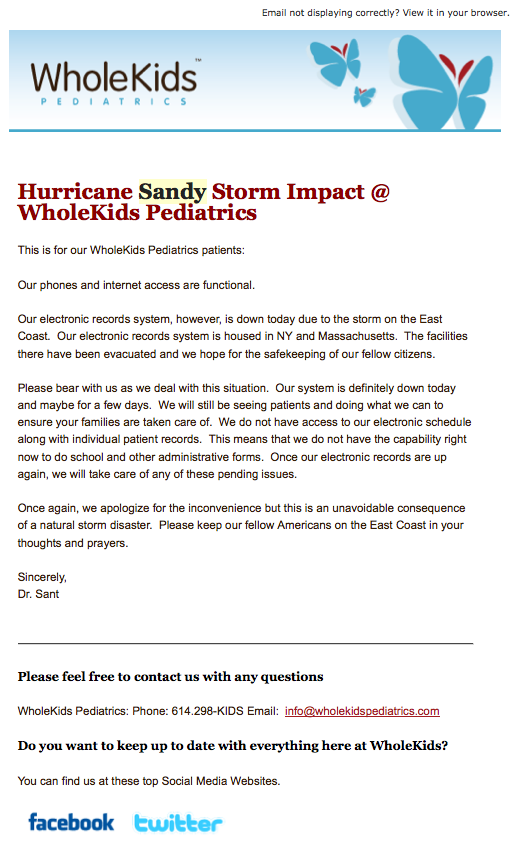
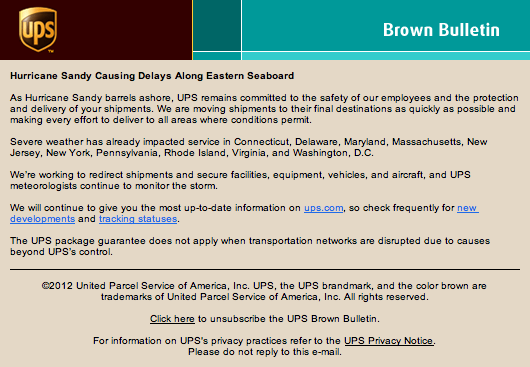
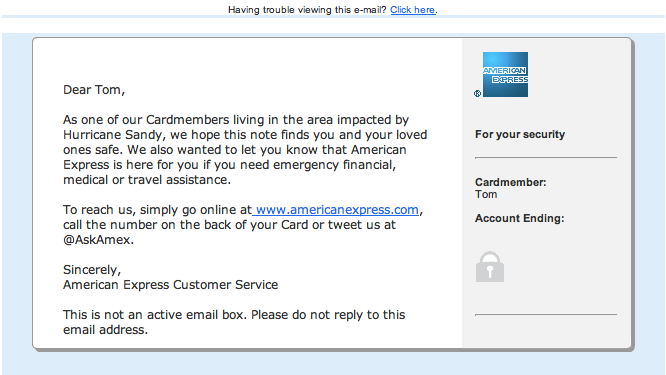

Something significant to note about these messages: the emails from banks were decidedly un-bank-like. The usual polished veneer was replaced with an obliging, accommodating tone. And none of these brands tried to sell anything – they understood it was not the time.
Anthropologie’s email fell somewhere in the middle of the road. It did encourage online shopping during the storm by offering free shipping, but the approach of the text was far removed from that of Urban Outfitters above. Observe:
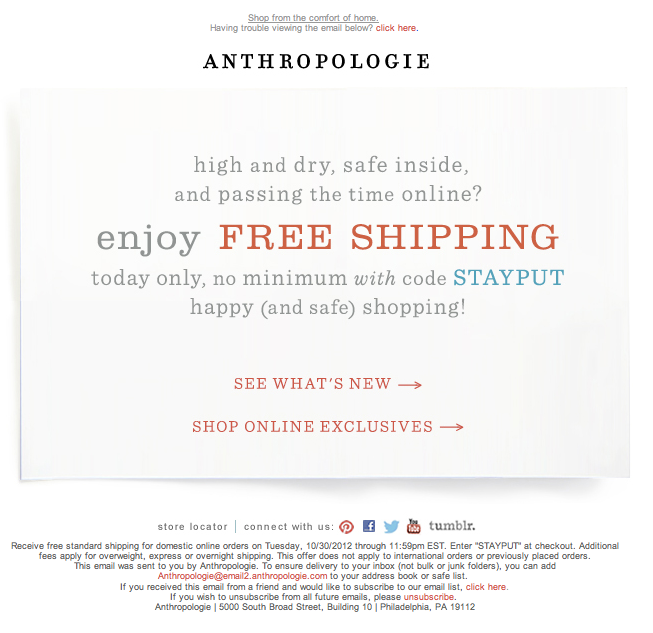
You’ll notice that instead of a flippant, “might-as-well-shop-with-us” attitude, Anthropologie’s copywriters went with thoughtfulness and attentiveness. The subject line read, “Stay put, please: shipping’s on us,” indicating that Anthropologie would rather lose some income than have any of its customers hurt traveling to its stores.
So in the end, it really does come down to compassion and consideration.
When you make the extra effort to be aware of major events your readers are going through, they will notice. Whether you handle it graciously or badly, they will file away their emotional reactions.
When you’re marketing in the face of disaster or pandemic, the impact of your email, even if it’s subtle, will last.
[ad_2]
Source link



